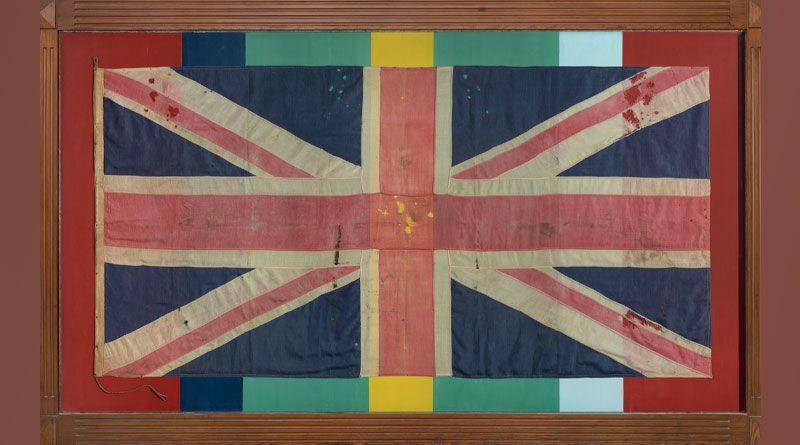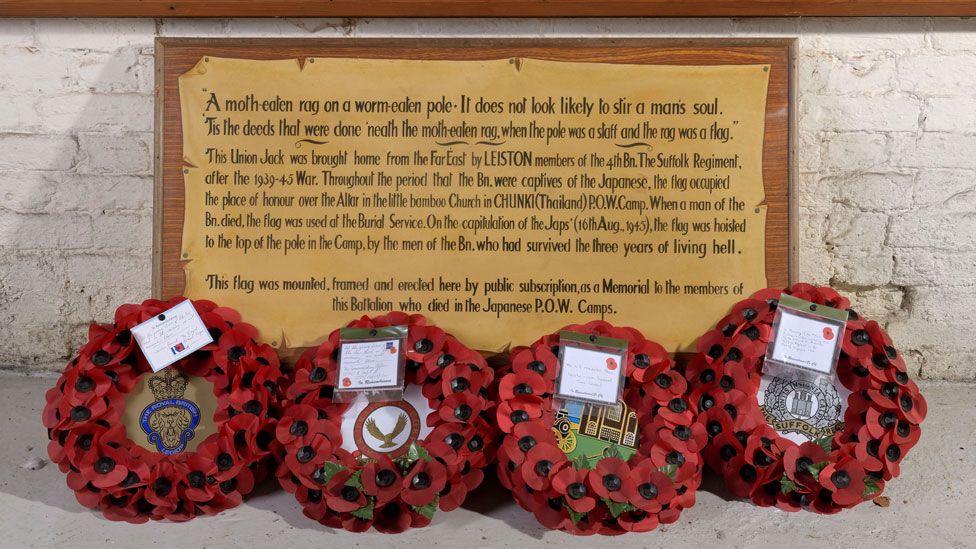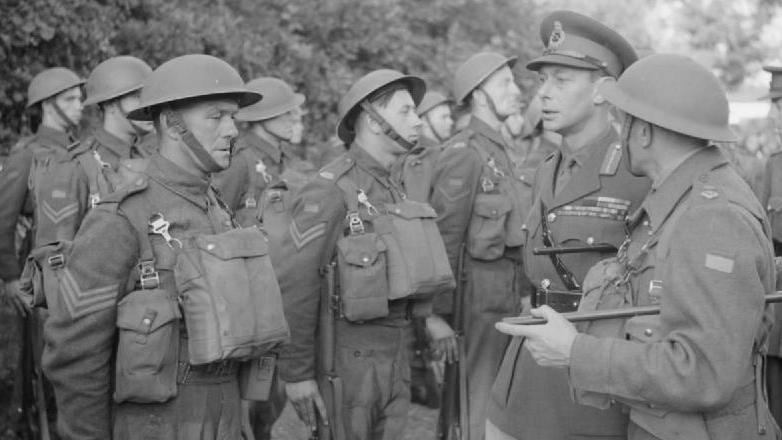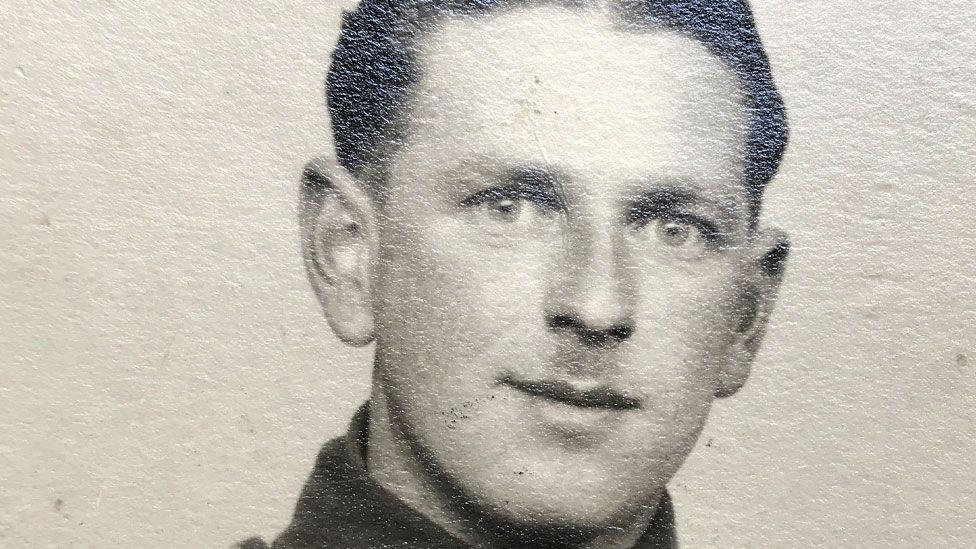How a 'moth-eaten rag' became a war memorial

The union jack is the centrepiece of a memorial made to remember the men of the 4th Battalion who died while prisoners of the Japanese
- Published
A small coastal town is home to an unusual World War Two war memorial created by soldiers in memory of comrades who died while prisoners of war (POW).
It was made by men from the 4th Battalion, The Suffolk Regiment, who were captured at the fall of Singapore in 1942. They spent more than three years as slave labourers for the Japanese army, much of it at Chungkai camp in Thailand.
The centrepiece of the memorial in Leiston, Suffolk, is a union jack, used in the camp during funeral services and brought home by Corp Hermie Bailey after he and the other survivors were finally liberated.
In 1952, the veterans transformed the "moth-eaten rag" into a tribute to the POWs of the 4th Battalion who died and to mark the 10th anniversary of their capture.
"Sometimes people just refer to it as a flag, but it's not just a flag - the flag is just the centrepiece of a very, very interesting and unusual war memorial," said Taff Gillingham, chairman of the Friends of the Suffolk Regiment.

Men from Suffolk, Norfolk and Cambridgeshire regiments joined other prisoners of war and slave labour to toil on the Burma to Thailand railway
In 1942, the 4th Battalion was among many Allied divisions rushed to defend Singapore, in the wake of Japan's attack on Pearl Harbour.
After fierce fighting but against impossible odds, the British, Australian and Indian forces were ordered to surrender.
Somehow the 11ft by 6ft (3.3m by 1.8m) flag went with the men of the 4th Battalion when they were transferred to Chungkai camp, said Mr Gillingham.
This was a POW camp used during the construction of the infamous Burma-Thailand Railway, external, and today it is a Commonwealth War Graves Commission cemetery.
About 13,000 Allied prisoners of war died during the railway project, plus an estimated 80,000 to 100,000 civilians, according to the commission.
Mr Gillingham said the 4th and 5th battalions of the Suffolk Regiment were about 2,000 strong when they disembarked at Singapore in 1942, but more than a third of them had died by the end of the war.
The POWs were allowed to build a little wooden chapel at Chungkai for church services, where the flag rested on its altar.
"And every time one of the soldiers died, it was used for the funeral service," Mr Gillingham said.
"Starved, beaten and executed for the slightest misdemeanours - the thing that inspires me is their resilience and their ingenuity, making medicines from plants that they'd find in the jungle, for example."

Every year on VJ Day (Victory over Japan), the people of Leiston remember the men from the town who never came back, said historian Taff Gillingham
Every aspect of the memorial has a specific link to the 4th Battalion, a territorial unit which recruited from the Leiston area.
Mr Gillingham said: "The frame is just as interesting [as the flag], in that it's made from wood salvaged from Southwold Pier and the metal frame it sits on was made by the engineering works of Garretts, the engineering works in Leiston, so it was a proper local project.
"And the colours behind the flag mean something too - they are the colours of the Pacific Star, the medal that all the Far East prisoners of war were given."
Today, it is owned by the Friends of the Suffolk Regiment and is on long-term loan to the town's Long Shop Museum.
'It's not just a flag'
An interview with Taff Gillingham about the history of Leiston's war Far East Prisoners of War memorial
When the men of the 4th Battalion were liberated at the end of the war, many, including Corp Bailey, continued to serve in the territorials for years, with weekly training and annual camps.
Underneath the memorial is a plaque which describes it as "a moth-eaten rag on a worm-eaten pole".
It also records how the union jack was "hoisted to the top of the pole in the camp by the men of the battalion who survived three years of living hell".
Mr Gillingham said: "It's often said to be the only war memorial based on an artefact brought back from the field, and it's certainly the only one I can think of, but it's a lovely thing because it has a direct connection with the place, and the people, with those who died."
A service to mark the 80th anniversary of Victory over Japan Day and the end of World War Two will be held at the memorial at 10:30 BST.
Get in touch
Do you have a story suggestion for Suffolk?
Follow Suffolk news on BBC Sounds, Facebook, external, Instagram, external and X, external.
Related topics
- Published23 March

- Published29 May 2024

- Published11 May
